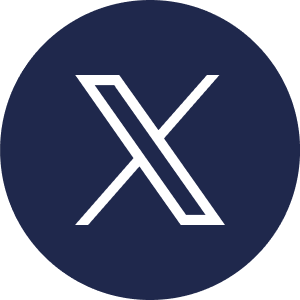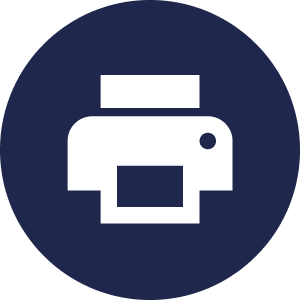Technology Specialist Needed
Real estate assessors don’t think of themselves as software specialists, even though software plays a key role in the profession. Mobile apps, automated scheduling, Excel tools - your ability to use software can either enhance or devalue your assessing department’s overall success. Of all the software tools an assessor uses, the CAMA system is the most important. That’s why choosing your CAMA system is one of the most critical decisions you can make.
Assessors typically perceive two options for their CAMA systems: custom software or commercial off-the-shelf (COTS) software. The majority of assessors will shy away from the complexities of custom CAMA software for a number of reasons:
They’re intimidated by having to learn new technology and to lead its implementation
They’re apprehensive about making such a costly decision
They’re afraid they’ll spend a lot of money and time and still not get the product they need
On the other hand, off-the-shelf software, while appearing to be easier to implement, often falls short of providing the specific features your office needs and generates hidden costs.
In this article, we’ll break down the cost/benefit of building a custom CAMA system vs buying off-the-shelf software. We'll also introduce the possibility of a third option: open source.
Building Only What You Need

A customized system comes with a higher initial cost in exchange for software that fits your needs perfectly and that often has a lower total cost. Most importantly, the system is completely under your control.
Valuation is the biggest area impacted by custom software. Rather than depend on canned models found in off-the-shelf systems, custom CAMA allows you to build tailored models specifically for your region’s tax characteristics. Custom CAMA is flexible, so as the real estate market changes, you can easily apply new types of models. In short, values become more accurate and precise because your models are purpose built for your jurisdiction.
Valuation is the biggest area impacted by custom software. . . . [C]ustom CAMA allows you to build tailored models specifically for your region's tax characteristics.
The idea of a purpose built system, not just a purpose built model, is powerful. When you buy an off-the-shelf system you're buying a lot of development that was done for jurisdictions that have different taxation needs than yours. For example, think of the differences between a city like New York, with a population of 8.4 million, and Fairfield, Iowa, with a population of 10,000.

The functional and design needs of a town like Fairfield, IA differ from those of a city like New York, New York, in part because of the difference in size.
A system built to cater to a big city like New York, with its complex tax codes and wide variety of property, would be overwhelming for a town like Fairfield, which has fewer administrative needs and simpler tax requirements. There are aspects of a big city system, however, that Fairfield could use. In such a case, it would make more sense for Fairfield to build a custom CAMA system, tailored to Fairfield's needs but incorporating some of the features of a complex system. The implementation cost and the training cost will be lower while the functionality of the system will be higher.
Functionality increases in part because custom CAMA software allows you build a user interface tailored to your office's workflow. In contrast, most off-the-shelf CAMA systems aren't very user-friendly. Training is essential because the software is not intuitive.
Concise CAMA - User Interface

Image from: www.concisesystems.com/ConciseCAMA
Custom software allows you to design a user interface that is much more intuitive. Modern user interface design principles emphasize the user experience so a major benefit of building customized CAMA software is taking advantage of these modern design principles. Your staff will thank you because they don’t need an engineering degree to use the software; you’ll be happy because the office can focus on assessing instead of figuring out how to use the CAMA system.
A Notional Example of a Simpler, More Intuitive CAMA Interface

Custom software has drawbacks. Designing custom software takes a lot of effort. You have to study your team's workflows, find a development partner, fight for budget, and manage the project from start to finish. But the time you spend and the effot you put into the project payoff in the long term because you have a product that truly meets your needs. You also have protected yourself against the risk of a vendor pulling their support of your product since you own the source code. The high initial cost results in much lower maintenance and support costs in the long run, so that the total cost is comparable to using an off-the-shelf product.
The Case For COTS CAMA

The biggest benefit of COTS CAMA software is that it comes with a lot of core functionality already built. If the vendor has been developing their solution for a while, the system you buy can be very powerful, with functionality well beyond an assessor's valuation and administrative needs. One CIDARE client once gushed that her CAMA system didn't just value property - it could also manage mail campaigns, double as a GIS system, and help facilitate tax collection.
And while you still pay development costs, you share that cost with the vendor's other customers so that your initial licensing cost is relatively low. In some cases, setting up the system can be done by your internal IT team and every year your maintenance and support fees help fund the vendor's improvement of the system.
Maintenance and support are a huge benefit for many jurisdictions. Maintenance ensures that your CAMA system gets needed updates, while support ensures that a technician is just an email or phone call away if a problem with the software arises.
However, off-the-shelf doesn't mean ready-to-use. Converting from one system to a new system is a major task and adapting a COTS system to your needs can be expensive. We've had clients who agreed to buy a COTS system for a low initial price and then found that implementation costs were three to four times more expensive than expected.
And all of the functionality of a COTS system can also be a drawback. When you pay for a large set of functionality but only need a little, you're subsidizing features for the vendor's other clients.
Finally, you're putting yourself at the mercy of the vendor. If the vendor ever stops supporting your system, you're in trouble. No doubt you're heard about or read articles about jurisdictions that were using CAMA systems that a vendor discontinued and had to pay large fees to switch to a new system. They couldn't keep using their old system because they didn't have access to the source code and couldn't make modifications.
Our advice - make sure you talk with other users of a COTS system you are interested in using. Ask the users how the vendor has supported them and what features of the software they find they use most. Ensure that what you're buying is something you'll use and that your vendor will provide support for the software you're buying over the long term.
Open Source - A Viable Third Option?

Open source software differs from traditional software in that the user gets access to the source code and can usually modify it as needed. Most open source software providers don’t charge to license their software; they make their money implementing the software for customers and providing support.
The initial appeal of open source is obvious - who wouldn't want a free to low-initial cost CAMA system? But it's the benefits beyond cost that make the idea of open source CAMA so appealing.
The low to non-existent licensing costs has meant that open source software has become popular. Most people have heard of Linux, for example, the open source competitor to Windows and Mac OS. Ubuntu Linux, for example, is free for anyone to use without having to pay for anything. Unfortunately, open source hasn’t come to CAMA yet, but we believe that it will in the next five years.
The initial appeal of open source is obvious – who wouldn’t want a free to low-initial cost CAMA system? But it’s the benefits beyond cost that make the idea of open source CAMA so appealing. Open source software combines the best qualities of custom software and COTS software. Like custom software, you get access to the source code, which protects you from a vendor suddenly pulling support for your CAMA system and allows you to extend and modify capabilities of the software as needed. Like COTS software, you don't have to start from scratch since a package with essential functionality is managed by a core developer group, or a vendor who manages the code base for the community. In fact, community is a good way to think about open source - the responsibility of expanding the capabilities of the software rests with the community.
In fact the community is another big benefit. Updates and security patches often occur more quickly than is typical for a COTS software system because members of the community address the problem immediately. Updates can happen in hours instead of weeks.
One final benefit of open source is that it is more easily integrated into other systems. Since most assessors need their CAMA system to interact with their GIS system, a tax system, and a host of other servers that help local government operate, open source's ability to make integration easy is a boon.
Open source has its drawbacks. If the community supporting is small or the vendor supporting the core code base does a poor job of curating the code, then the CAMA system can quickly get out of date and be full of bugs. Implementation costs can still be high, just like they are when setting up a COTS system and converting from the old system to a new one. The need to work with software engineers directly, as you would when building a custom CAMA system, can be daunting and require more time than the assessor wants to give.
In the end, we believe the low initial cost, the flexibility of the software and the future proof aspects of being able to access source code will mean open source software will be the long term future of CAMA.
No Need to Settle
Assessors don't have to be technology specialists, but they do need a high level understanding of the options to consider when deciding on a CAMA system. If they have that understanding, then assessors don't need to settle for something that meets only a few of their needs. Is a COTS system really the best option? Can you build a custom CAMA system for the same total cost as a COTS system, with the added benefit of having a system that matches your needs precisely? You are in the best position to determine what the best option is, provided you understand the benefits and detractions of a particular option.

Ready to get in touch?
By
Tracy Blanchard and Matthew Cabrera
at
CIDARE, Inc.
By
Tracy Blanchard and Matthew Cabrera
at
CIDARE, Inc.
Updated On:
January 8, 2025 at 3:39:37 PM







